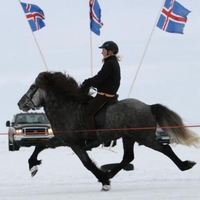“Riding up forested mountain sides, in wide open spaces, and with walls”
Developing an Ecology of Horse–Human Relationships
DOI:
https://doi.org/10.52537/humanimalia.9993Abstract
Multi-species ethnography calls for new ways of engaging the contact zones or areas of entanglements among humans and other species. A number of studies identify and describe the roles of embodiment and bonding in developing a sense of partnership or co-being between horse and rider that challenge hegemonic dualisms of horse-human or nature-culture. Less attention is paid to potential roles that the local physical environment or terrain where riding takes place can play in the development of particular horse-human relationships. Informed by a grounded practice theory approach, analysis of narrative data collected in sixty open-ended interviews with US Midwestern and north Norwegian horse people, who participate in different equestrian sports and ride within a variety of local settings, demonstrates complex ways in which terrains ridden effect a complex series of interwoven constructions of shared ecologies of horse-rider relations, identities, and psyches. Riding venues for this study include walled arenas, open spaces of the Great Plains, and forested mountains of Arctic Norway, wherein riders and horse enact their selves as highly schooled, deep thinkers; fearless, adrenaline junkies; self-pacing, heroic stoics, and/or as connoisseurs of nature’s versatility.
Downloads

Downloads
Published
Issue
Section
License

This work is licensed under a Creative Commons Attribution-NonCommercial 4.0 International License.


